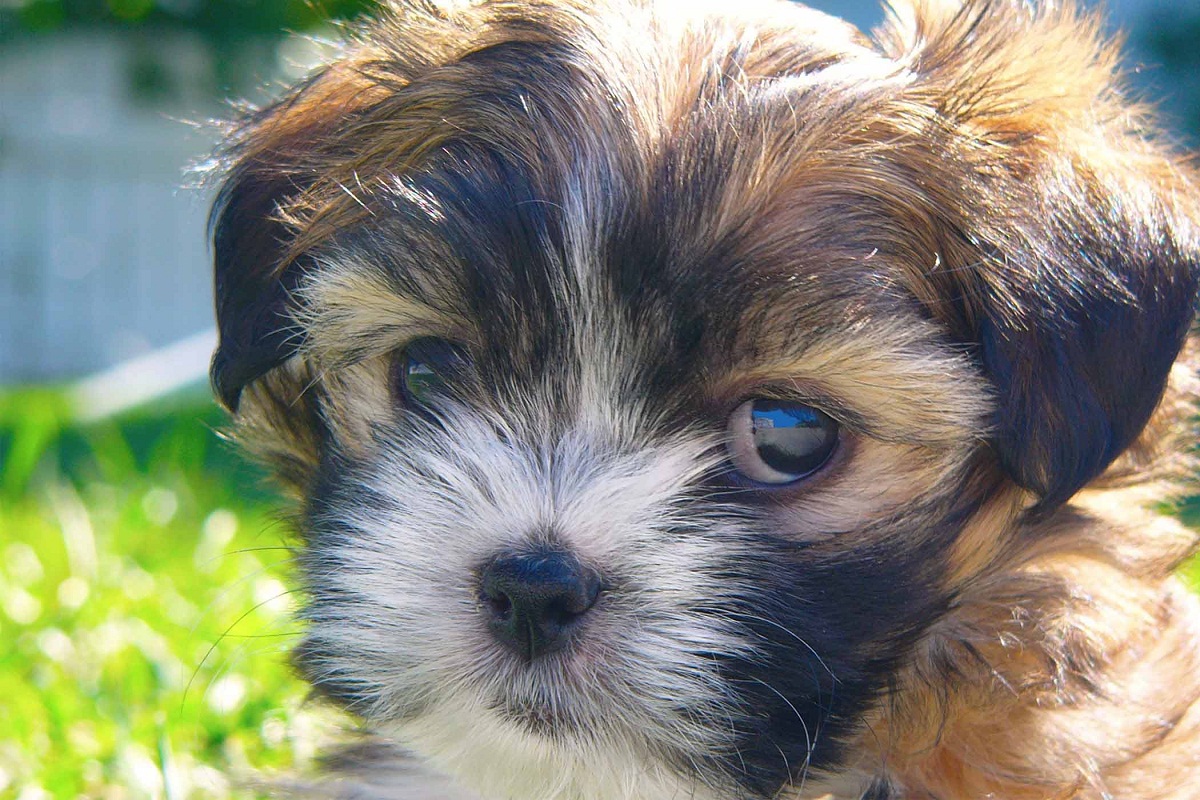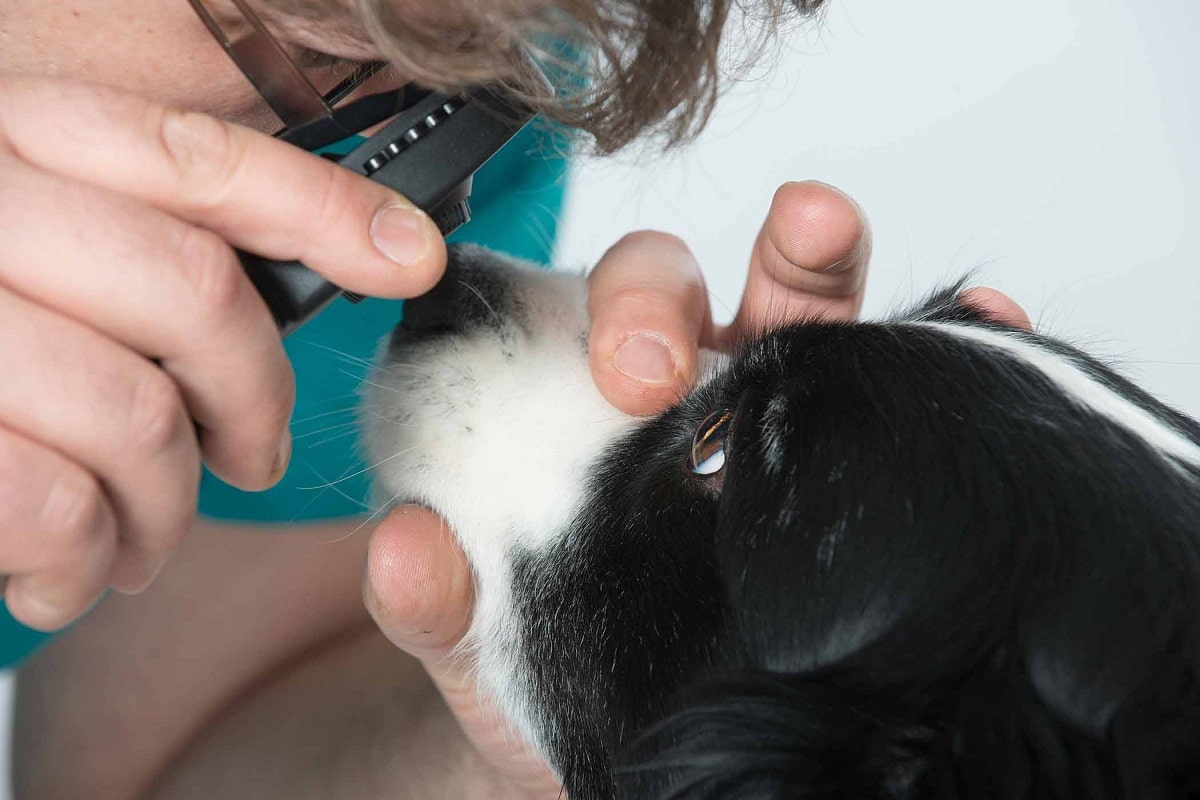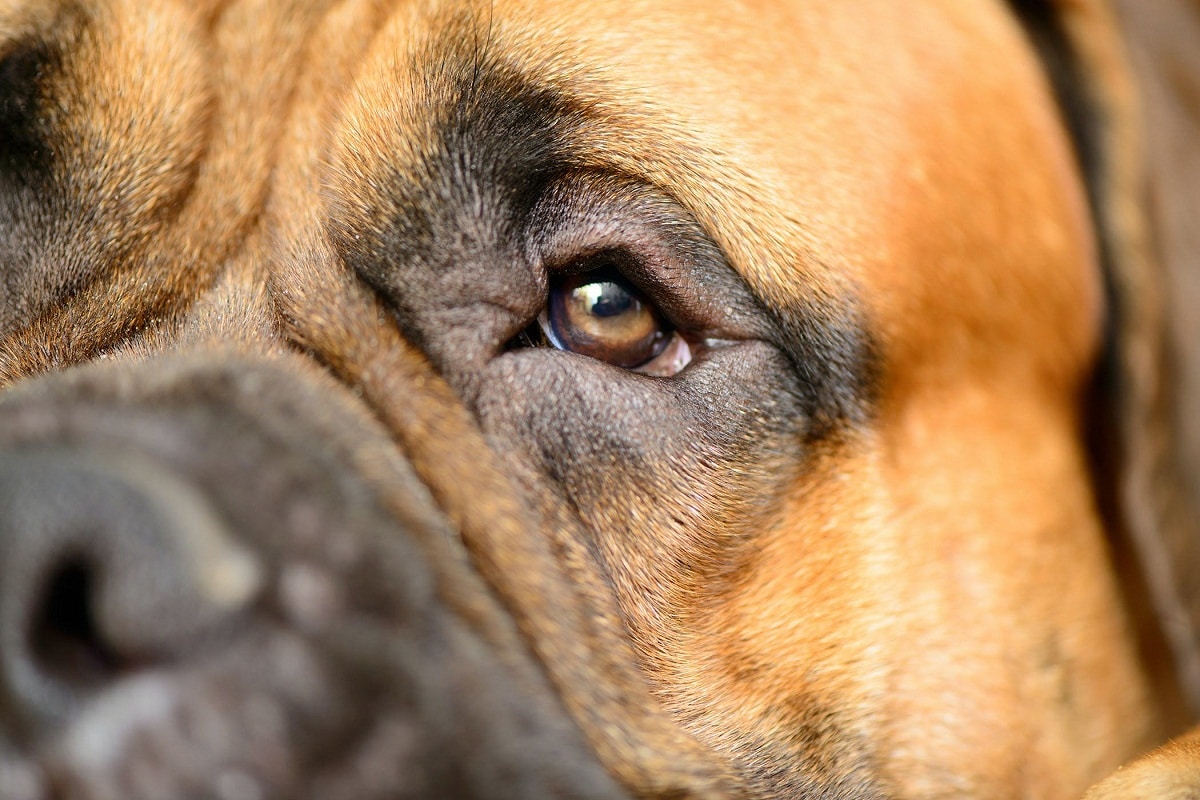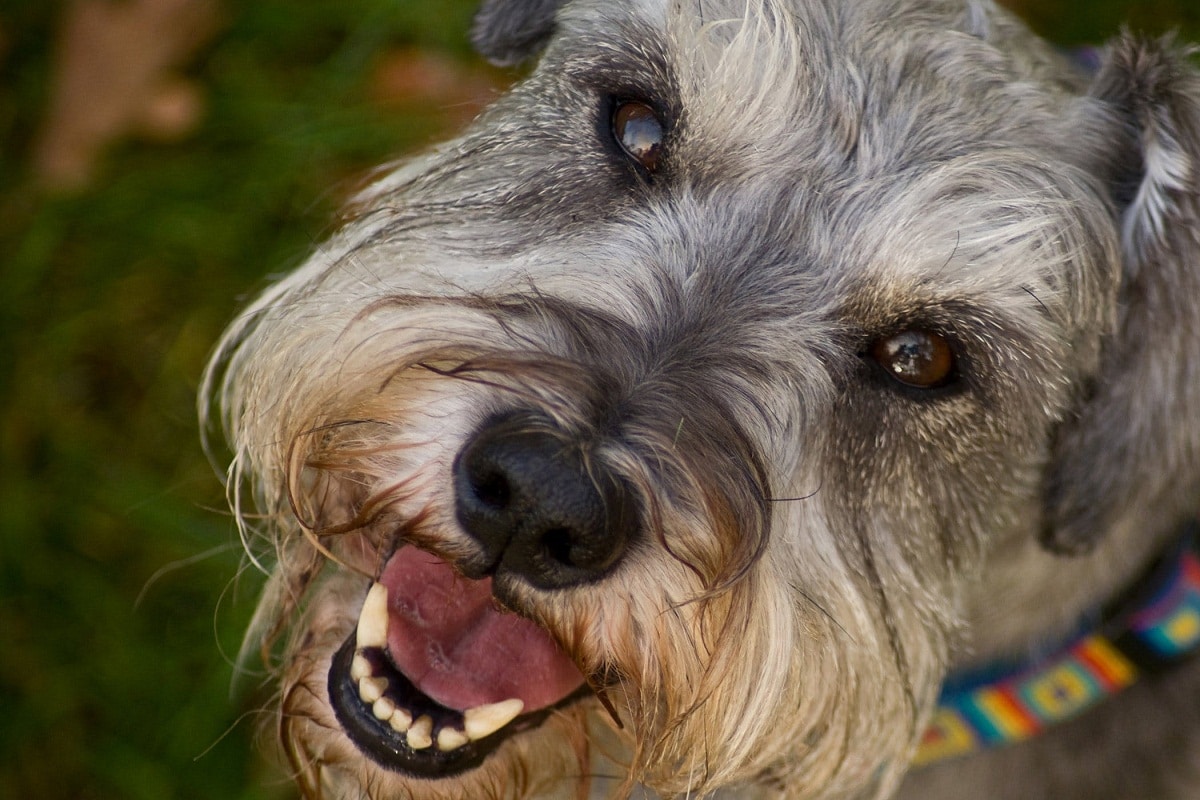
All the uneven pupils in dogs they are called anisocoria, and it consists of an asymmetry between the two pupils, these being of different width. It occurs in both dogs and cats, and is characterized by great size inequality. It can occur due to various causes, and requires veterinary treatment.
There are different reasons that cause the appearance of this problem. One of them is inflammation in the frontal region of the eye, although it can also be due to other enfermedades that affect the tissue of the iris. Another possible cause is insufficient development of the iris, as well as increased pressure in the eye, infections, scar tissue that accumulates in the eye, cancer, or side effects of some medications.
Causes of uneven pupils in dogs

Insufficient iris development
Another possible cause is insufficient iris developmentas well as increased pressure in the eye, infections, scar tissue that builds up in the eye, cancer, or side effects of some medications.
Anisocoria from trauma
A strong blow to the dog's head can lead to uneven pupils. Possibly the trauma affected the nerves that connect the eyes with the brain.
If there are no other signs in the canine that are alarming, it is advisable to wait 24 hours for it to normalize and if not, you have to take him to a veterinary ophthalmologist.
Repetitive trauma to the eyes
As a result of the dog scratching and rubbing incessantly in that area, they can cause anisocoria. You can try to improve the situation by putting an Elizabethan collar on itIf the size of the pupils does not improve in about two days, it is time to call the specialist.
Contact with plant products, chemicals or drugs
Only in cases in which the exposure of one of the eyes to any of these elements, can directly cause pupil inequality. In these cases, it is necessary to rinse thoroughly with sterile saline solution, to ensure that any particles come out or dissolve with the liquid.
For a correct diagnosis, it is necessary for the veterinarian to thoroughly evaluate the dog, analyzing the possible neurological and ocular causes responsible for the anisocoria. Ultrasound technology is often used for this., capable of detecting lesions in the eye.
Computed tomography and magnetic resonance imaging, on the other hand, are very useful to locate brain lesions, which in turn can cause this problem.
Your treatment depends on that diagnosis. Depending on the cause, one medication or another will be prescribed, which it can be very different depending on whether the problem is eye or brain.
This must be prescribed by the expert; never medicate the animal on our own, as we can cause serious health problems. Likewise the treatment must be applied strictly as prescribed by the doctor, without interruptions and complete so that the results are optimal and in the shortest possible time.
There is no way to prevent this difference between the size of the pupils, due to the variety of factors that cause it. In any case, it is convenient to examine our dog's eyes often, because in them the symptoms of various diseases are reflected. Before the appearance of any of them, we must go to the vet as soon as possible.
What we can do is avoid risk situations for the animal, in which it can fall or hitting the head or hurting the eyesIt is also important that you have good early socialization so that you do not fight with other pets and cause injuries that generate, among other things, anisocoria.
The environment where the dog is kept must be as safe as possible. keep sharp or heavy objects away that can fall on it, chemicals and outside, weeds, sticks and branches can do significant damage.
As we have said before, the causes of anisocoria can be of neurological origin and of ocular origin.
To determine them, a thorough review of the veterinarian is necessary, by applying specialized tests such as an ultrasound, a CT scan, or an MRI.
Dilated pupil in one eye
It is not normal for the dog's pupils to be dilated, much less if it is a singleIf this happens, it is possible that the pet may have suffered some trauma or have eye problems and in some cases due to psychological problems.
As well means the presence of some brain injury whose prognosis is delicate, but only the veterinarian is in the capacity to determine the possible causes and apply the proper treatment.
Other reasons for anischornia or dilation of a single pupil, is an injury to the cervical spine. Very strong blows from falls, attacks or due to being run over are the main causes of this pathology in the animal.
What do dilated pupils mean in dogs?
Let's first place the pupil inside the eye, since it is that small point that is right in the center of the eye and inside the iris. It is a muscular membrane whose elasticity allows it to contract and expand, in response to light stimuli.
In the dog, the pupil is larger, giving it a wider field of vision. These tend to be dilated for different reasons, including:
-
In certain emotional states.
-
When it is necessary to capture more light.
-
For the suffering of diseases.
-
To the moment close to death.
Mydriasis or dilated pupils can be in one eye, or in both. When the pupils are the same size they are considered normal, they will be dilated by the stimulus of light.
My dog has dilated pupils and is shaking

These are the possible causes, why your dog has dilated pupils and trembles:
Poisoning
A dog that is intoxicated He has hypersalivation, seizures, tremors, and mydriasis. He also looks disoriented, vomits, and is depressed. All are cause to take him to the veterinary emergency.
Psychological trastorn
At times when the pet is under stress, these two symptoms are obvious. For example the phobia of fireworks. To these two symptoms are added uncontrolled urination, panting, hypersalivation and others. They can be solved with professional training.
Obsessive compulsive disorder
This consists of the repetition of certain behaviors in the animal, which do not respond to particular stimuli or situations. The symptom that occurs in these cases is mydriasis.
Examination that the vet performs on a dog with dilated pupils
One method of holding the dog and being able to see the pupils is to place it on a table. In this case, you have to stand at the other end of the table and opposite the eye to which one is going to take a look.
Place your right arm on the dog's shoulders. Use your left hand to firmly push the dog's muzzle towards the table and lower the lower eyelid down. Use your right hand to hold the medicine container.
If the dog tries to stand up, lean his upper body on his shoulders to prevent him from getting up, and try to lay it on its side. Use your right arm and upper body to keep the dog lying on its side.
Use your left hand to keep your head on the table and lower the lower eyelid down. This procedure is easier to do if you have someone to help you. To examine the eyes, the head is cupped between both hands with one thumb on the upper eyelid and the other thumb on the lower eyelid.
To see the parts of the eye below the upper eyelid, lift the upper eyelid up with your thumb, which will open the eye wide. The white part of the eye is the sclera. The sclera is normally bright white in color and has small, thin red blood vessels on its surface.
Abnormal findings in the iris include:
-
Ragged edges, although this can occur with aging and is called iris atrophy.
-
Growths on the iris.
-
Black spots on the iris.
-
Blood stains on the iris.
The pupils of dogs are round compared to the pupils of cats they are oval. The pupils should be the same size and should contract to an exact point when a bright light shines into the eye.
When you pull down the lower eyelid, you can also see the third eye eyelid, also called nictitating membrane, which will protrude through the lower inner corner of the eye.

The third eyelid does not stick out as easily in the dog's eye as in the cat. The third eyelid is usually pale pink or white in color and has thin blood vessels on its surface. The third eyelid is usually not visible.
Eye medications can be drops or ointments. Ointments stay in the eye longer than drops, so they are generally applied less often. Your vet will prescribe specific medications for this type of problem.
Hello, notice that my dog has a more dilated pupil than another, is it possible that it is because a cat has scratched it?